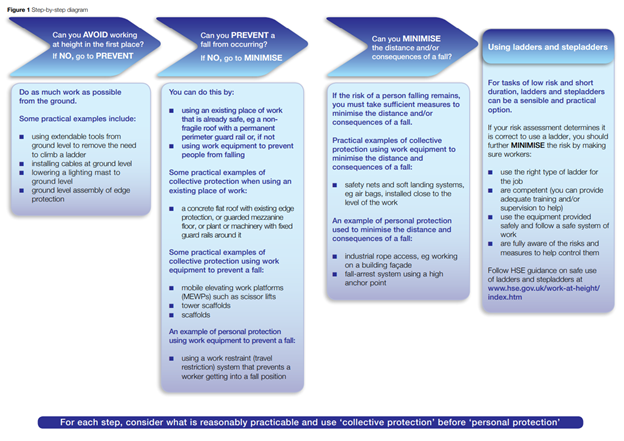Working at height remains the number one cause of fatal accidents in the workplace and worryingly, 13 out of the 48 prosecution updates published by the HSE so far this year involved Working at height scenarios.
Statistics from the HSE’s 2019/20 RIDDOR show that 29 workers died last year due to falls from height, making it the largest category of fatal accidents in the workplace – equating to 26.1% of all workplace fatalities in Great Britain. These figures vary between sectors – the highest risks being in the construction industry, where falls from height made up an alarming 47% of fatalities.
What is the definition of working at height and what are the most common causes for accidents?
‘Work at height’ means work in any place where, if there were no precautions in place, a person could fall a distance liable to cause personal injury. Common cases include falls from ladders and through fragile surfaces, for example a fall through a fragile roof.
What lessons are being learned from accidents while working at height?
Not surprisingly, the HSE has provided comprehensive guidance to businesses via their website and of course, the subject is governed by specific regulation – the Working at Height Regulations 2005. Whilst the HSE annual statistics show a reduction in Working at Height fatalities when compared to the annual average for the 5 years 2015/16 – 2019/20, there is still much work to do and with new Health and Safety challenges brought about by the pandemic, it’s never been more important to engage employees to “think safely” and reminding them of the basics:
Back to Basics: dos and don’ts of Working at Height
Do….
- as much work as possible from the ground.
- ensure workers can get safely to and from where they work at height.
- ensure equipment is suitable, stable and strong enough for the job, maintained and checked regularly.
- take precautions when working on or near fragile surfaces.
- provide protection from falling objects.
- consider emergency evacuation and rescue procedures.
Don’t…
- overload ladders – consider the equipment or materials workers are carrying before Working at Height. Check the pictogram or label on the ladder for information.
- overreach on ladders or stepladders.
- rest a ladder against weak upper surfaces, e.g. glazing or plastic gutters.
- use ladders or stepladders for strenuous or heavy tasks, only use them for light work of short duration (a maximum of 30 minutes at a time).
- let anyone who is not competent (who doesn’t have the skills, knowledge and experience to do the job) Work at Height.
Working at Height Risk Assessments
As with all workplace activities and environments, you must make sure work is properly planned, supervised and carried out by competent people with the skills, knowledge and experience to do the job, and carrying out Risk Assessment will guide the control measures that you will need to put in place to manage safety risks.
Click on the image below to go to the HSE resource “Working at Height”: A brief guide.







